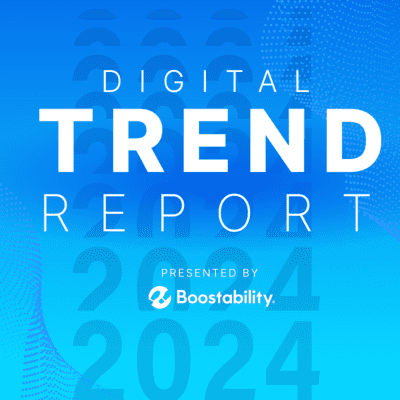A good website is a mix of elements that are both functional and artistic. You want to turn your website visitors into customers, but you also want to have an easily navigated site that the search engine crawlers can easily index for better search results. The best web design is easy to navigate and has a clear message. Therefore, the website should reflect the brand and design of the business.
Bad web design will impact your online presence and marketing. It’s estimated that your business has about 20 seconds or less to grab the attention of a new visitor to your site. If your site isn’t designed to load properly and make a good impression, you’re losing business two ways. First, the customer isn’t sticking around to get into your pipeline. Second, the search engine crawlers use your customer’s experience to index your page. When customers don’t spend time on your website, Google and other search engines rate it lower, which means you aren’t reaching other customers who are searching for businesses like yours.
Here are some web design tips that can help you avoid having an ugly or badly designed webpage. Avoid these mistakes on your webpages to create a site that’s both easy to use and nice to look at.
Having Too Many Elements
Many small businesses put too much information on a webpage, which makes it appear busy and cluttered. That is to say, when there are too many elements on the webpage, the user isn’t sure what is the most important to read first. Customers aren’t sure how to navigate the site, so they don’t stick around to explore what there is to offer. Instead, keep each page simple and neat with one clear objective. The homepage should be easy to use, letting customers find the right information without feeling overwhelmed.
Being Too Stark
Minimalism is a trend in interior design that can work on a webpage if it’s done right. Visitors to your website need clear direction. Too little information on the page doesn’t give your customers a reason to shop with you. You have to let your customers know what your business is and how you can help them. Bad web design leaves your visitors guessing about what you do. As a result, they’ll go to your competition without giving you a chance. Make sure that each page has a clear message.
Not Having a Call to Action
A call to action is the device that prompts your customer to do something. For example, “Learn more about our services.” “Click here to order.” “Get a coupon by joining our newsletter list.” Good CTAs tell your customers what to do next to get them in your pipeline. A call to action should be concise and informative. However, it shouldn’t annoy your customers. A poorly designed website doesn’t have CTAs. Bad web design can also include CTAs that annoy your customers. Don’t overdo CTAs. Instead, give customers time to explore before the CTA pops up.
Being Too Confusing
A confusing website occurs when you’re trying to present too much information on one page or when you don’t have a clear image. Maybe you’re using dozens of images or colors that don’t relate to each other. Your website has too many fonts or logos. Don’t confuse your customers. Stick to one theme, one idea and a color scheme that goes through your entire site.
Missing Information
Your customers want to contact you. When your site lacks information on how to contact you, it could frustrate your customers. Make sure your website has a complete “Contact Us” webpage that matches the information on social media and Google My Business. Ideally, the contact information should be at the bottom of every page, too. Providing your phone number and email offers authenticity to your customers. Make sure to follow up with phone calls and emails. Missing and incomplete information is bad web design.
Using Low-Quality Content
Modern customers want relevant information that matters to them. You need well-written content that describes your products, services, and industry well. Take professional pictures that convey a message quickly. Don’t use irrelevant content that clutters up your site and confuses your user. Every element on your website should relate to your business and brand. Invest in high-quality content that provides information to your customers. For instance, include a variety of content, infographics, blog articles, videos, and pictures to engage your customers.
Not Having Clear Navigation Clues
Don’t hide your menu or search bar. Make sure customers can easily navigate your website to find what they are looking for. Give your users a clear path through your website into your pipeline. It will help you understand your customers better, as well as helping your customers get the right information. Search engine crawlers rely on clear navigation to index your site. Good web design isn’t only about customer experience. It’s also about functionality and SEO. When your site is well-designed, it boosts your organic ranking.
Not Reflecting Your Brand
Bad web design confuses your customers by sending muddled messages. Your website should be reflective of what you do. For example, a vacation website should feel relaxing and comfortable, not busy and jumbled. If one of your key objectives is to be eco-friendly, your site needs to project who you are. Make sure that your webpage clearly identifies your brand through all its elements.
Slow-Loading Pages
Search engine optimization is a complex algorithm that measures many different factors of each website to rank in search. One element of SEO is how fast your page loads. Pages that load slow rank lower than pages that load quickly. Customers won’t wait around for pages to load, which means you’re losing business when a customer leaves to find the information they want. Make sure that your site is clean. Don’t have too many pictures on each page. Above all, keep your pages concise to load quickly.
Not Knowing Your Audience
Your website should be attractive to your target customer. Your web design attracts your customers. Is your brand young and hip, professional, or bubbly and trendy? Trying to please many different types of customers will create bad web design that appears muddled and unfriendly. If you’ve spent time identifying your target audience, use that information to design a site that appeals to those people. Don’t spend time trying to reach people who aren’t in your demographic.
Annoying Ads
It’s no secret that ads are vital to web design. Blogs often use ads as an income stream, but too many ads will keep visitors from your site, which doesn’t bring in any money. Make sure your ads don’t distract from your information. If your ads annoy you, imagine what they’ll do to your customers. Pay attention and analyze all of your ads to ensure that your ads aren’t keeping shoppers from your site. Pop-up ads that can’t be easily closed will make customers find your competitors. Don’t assume that your ads are inconsequential to the user experience.
Build Your Website For Search Engines and Your Customer
Every step of the design process has to keep your customers, brand image, and SEO in mind. Balancing user experience and interface isn’t always easy. Build your website to be easy-to-use by customers and for search engines to find your business. You need high-quality content, speed, mobile responsive, and SEO elements. Your site should generate leads at an affordable customer acquisition cost.
BoostSites lets you design a website that is attractive to your audience, regardless of what device they use to find your company. Our company knows that your business needs tools that are affordable and effective across the board. BoostSites is that product. You can have a clean, clear website that your customers will use while making sure that your site is responsive to search engine crawlers that index your site. Give up bad web design by using professional tools that increase your online presence and add to your business value. Contact our team today to learn more about web design options that will fit into your business.










